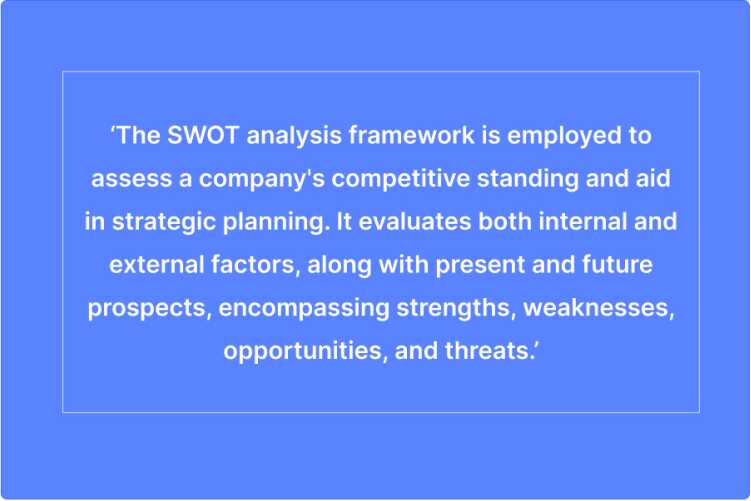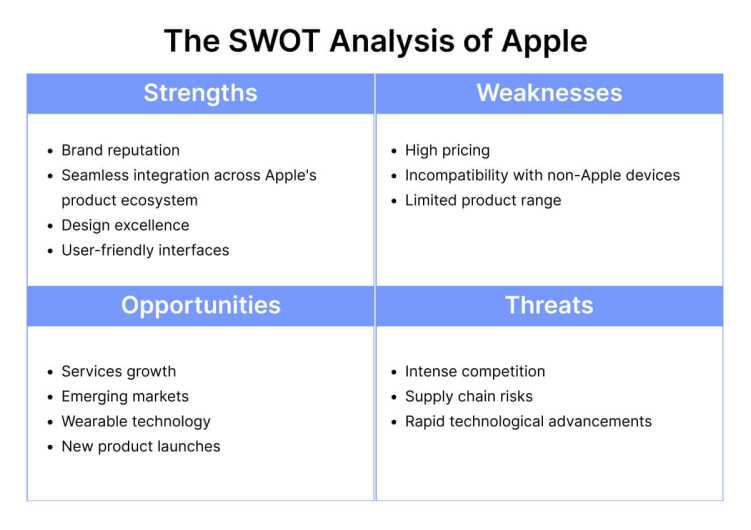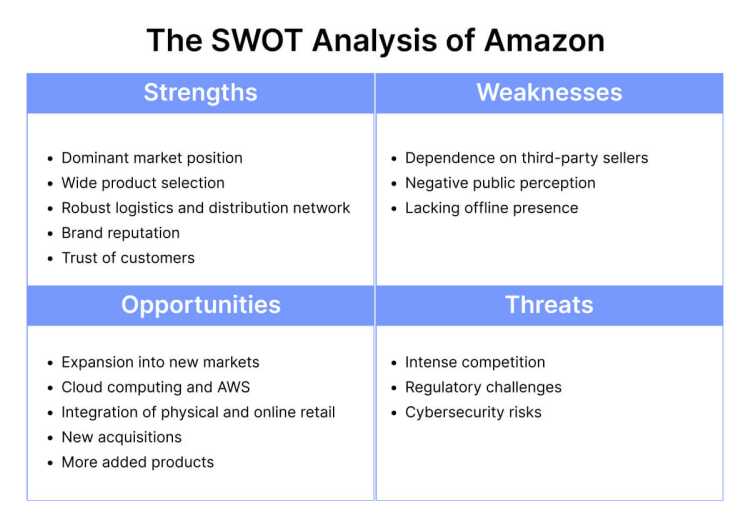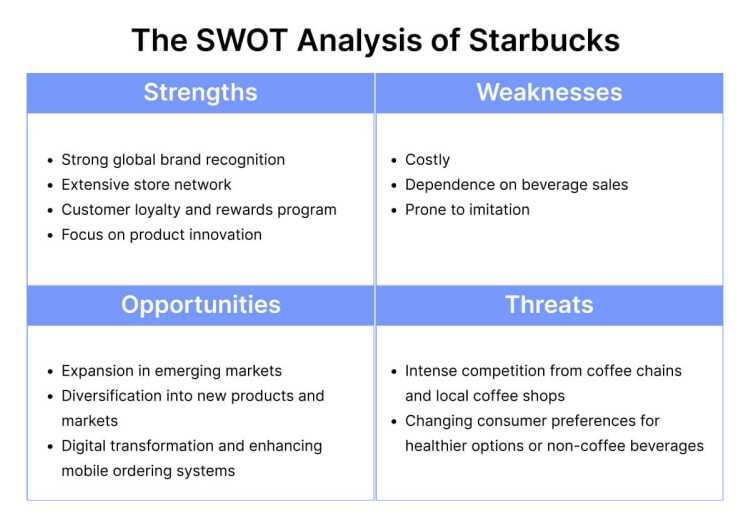What is SWOT Analysis & How to Do It – Examples & Pro Tips
- June 15, 2023
- 12 mins read
- Listen

Embarking on a new venture or a fresh product launch or may be conducting a comprehensive company analysis? Discover the secret ingredient you need!
‘The SWOT Analysis!‘
You can utilize it to pinpoint strengths, weaknesses, new opportunities, and important threats, aiding in the formulation of a new plan or roadmap for your company. Though it may appear complex, it is actually straightforward in practice.
Whether you’re on the hunt for hidden opportunities waiting to be seized or eager to uncover the hidden gems of your organization’s strengths, fear not! I’ll be your trusty guide, leading you step by step through the art of performing a captivating SWOT analysis. And to make it even more delightful, I will also add some engaging examples along the way to inspire your strategic exploration.
Keep on reading to know more!
What is SWOT Analysis?

The SWOT analysis method assists in gauging your company’s competitive edge, which essentially distinguishes it from other enterprises in the same industry. This unique quality is what sets your business apart and influences customers to choose your products or services over others.
Conducting a SWOT analysis provides you valuable insights into the current state of your business, its potential future trajectory, and the actions required to reach your desired outcomes. Such crucial information facilitates informed decision-making and aids in strategic planning.
Decoding SWOT: What Does It Stand For?
SWOT stands for an acronym, which signifies:
- Strengths
- Weaknesses
- Opportunities
- Threats
These four aspects can be classified into internal elements (strengths and weaknesses) and external factors (new opportunities and threats). When formulating your business strategy, it is important to take into account each of these components.
Here are a few illustrations of what might be included within each of the four categories:
Strengths:
Strengths pertain to the advantages that your business possesses, such as:
- A healthy work environment
- A highly skilled and cohesive team
- Favorable partnerships with specific suppliers
Weaknesses:
Internal weaknesses refer to factors that might impede the progress of your business. They may include:
- Inadequate management practices
- Suboptimal handling of customer complaints
- Unnecessary expenses
Opportunities:
Seek opportunities to leverage your internal strengths and address your weaknesses. Opportunities could encompass:
- Employees displaying a willingness to undergo training to enhance their skills
- New technologies that can streamline your business operations effectively
- Collaborative possibilities with other businesses in related fields
Threats:
A threat in SWOT analysis refers to a factor that can impede long-term progress or ruin favorable expansion opportunities. Here are a few examples of external threats that could negatively impact your business:
- Incurring excessive expenses without adequate analysis
- The emergence of a new, competing business with greater startup capital in your vicinity
- Instances of discrimination or other problematic behavior exhibited by different employees
Gaining Strategic Clarity: Unlocking the Benefits of a SWOT Analysis
The application of SWOT Analysis enables you to question risky assumptions and reveal potential blindspots concerning your organization’s performance. By utilizing it cautiously and in collaboration, this analysis can offer fresh perspectives on your business’s current position and assist in formulating an optimal strategy for any given situation.
For instance, while you may have a good understanding of your organization’s strengths, it is only when you document them alongside weaknesses and threats that you may recognize the limitations or vulnerabilities associated with those strengths.
Let’s have a detailed read!
Gives You the Right Direction
A SWOT analysis provides guidance, similar to a GPS, by informing you about your current location, potential destinations, and the path to reach them. It also enables you to assess your available resources, the immediate and long-term environment, and any overlooked opportunities.
Aids in Defining Objectives
While defining specific business goals is important, determining those objectives can often pose a challenge. By employing a SWOT analysis, you can effectively establish team goals. It enables you to gain clarity on the necessary actions required to leverage strengths and address weaknesses, thereby providing a clear roadmap for progress.
Valuable Tool for Decision-Making
Conducting a SWOT analysis enables you to gather essential information needed to make informed decisions and establish priorities. Without taking time for reflection before moving forward, there is no opportunity to learn from past mistakes or successes. A SWOT analysis prompts a pause for careful examination of previous decisions, facilitating the planning of future steps.
Fosters Collaboration
A SWOT analysis promotes a collaborative environment, ensuring that your team feels valued and comprehended before proceeding collectively.
Enabling your team to actively participate in important decision-making processes is crucial for establishing mutual trust. Utilize this opportunity to encourage your team members to express their opinions, share ideas, and voice any concerns they may have.
While engaging in this process with your employees, take note of the valuable qualities possessed by your team. Expressing appreciation for the individuals you collaborate with contributes to fostering a positive company culture. Recognizing and acknowledging the competencies of your employees serves as a brilliant means of boosting morale.
Pinpoints the Improvement Areas
By conducting a periodic SWOT analysis, you will gradually recognize areas where notable improvements have been made, both in external aspects and within team dynamics. Utilize this opportunity to discuss with the team whether previous weaknesses have been adequately addressed and resolved.
Helps to Evaluate Your Team’s Progress
A SWOT analysis assists in determining whether your team is heading in the correct direction.
How has the situation evolved since the last analysis? Are all the previously discussed aspects still on course? Utilizing this process will enable you and your team to gain a comprehensive overview of the company’s doings, providing a bird’s-eye view of the overall progress.
Helps in Threat Prevention
It can effectively detect potential threats that may be looming ahead. For instance, is there a new business attempting to attract your clients or poach your employees? Identifying these threats before they turn into significant obstacles to your business is crucial for maintaining stability and success.
Empower Your Business Strategy: Learn How to Do a SWOT Analysis
Utilize the insights gathered from your SWOT analysis to accomplish your company’s goals and objectives. Now that you’ve gained a grasp of its fundamental aspects, let’s dive into the essential steps involved in crafting this valuable tool.
1. Fix Your Objective
Before you embark on jotting down your thoughts, it’s essential to determine the specific focus of your SWOT analysis.
Narrow down and define precisely what you intend to evaluate. Without clear specificity, your SWOT analysis might become too broad. For instance, if you’re planning to launch a social media program, conducting a SWOT analysis will help shape your content creation strategy.
If you’re planning for a new product launch, understanding its potential positioning in the market becomes crucial. Similarly, if you’re contemplating a brand redesign, considering both the current and future brand perceptions become significant.
All these instances exemplify valid reasons for conducting a SWOT analysis. By clearly identifying your goal, you can tailor the evaluation to gain more accurate insights.
2. Bring Together the Right Team
Assemble a diverse group of individuals from various departments and teams across your organization. By doing so, you will tap into the unique perspectives held by different groups, which are essential for the success of your SWOT analysis as it enables a comprehensive and well-rounded examination of your business.
Each department and team possess distinct insights and experiences that contribute to a more holistic understanding of your organization’s strengths, weaknesses, opportunities, and threats. Embracing these diverse perspectives will enrich the outcomes of your SWOT analysis and enhance its effectiveness in guiding strategic decision-making.
3. Encourage Brainstorming and Idea Sharing
Conducting a collaborative brainstorming session within your team fosters a sense of inclusivity and appreciation for each individual’s contributions. This approach allows for the exploration of diverse perspectives and novel ideas that you may not have considered otherwise. Moreover, it presents an opportunity to identify and leverage everyone’s strengths.
Allocate a designated period of time to ignite the creative sparks within each team member. Implement time-blocking strategies, like the Pomodoro technique, to ensure that the session remains focused and within the allotted time frame. By the end of this structured session, you will have compiled an extensive list of strengths, weaknesses, opportunities, and threats, enriched by the collective input of your team.
4. Evaluate and Sort the Ideas
Once you have gathered all the ideas, it’s time to proceed with the process of sorting them. One effective approach is to implement a voting system where each participant is allocated a specific number of “votes,” typically five or ten, which they can distribute among the ideas as they see fit. Employing colored sticky dots can prove helpful during this stage of the exercise.
Once the voting is done, you will have a prioritized list of new ideas based on the collective input. However, it’s important to note that the list is subject to discussion and debate. Ultimately, a decision-maker in the room, often the CEO or someone responsible for business strategy, should have the authority to make the final call regarding prioritization.
It’s vital to repeat this idea-generation process for each of the four quadrants of your SWOT analysis: Strengths, Weaknesses, Opportunities, and Threats. This comprehensive approach ensures a thorough evaluation of your organization from all angles.
5. Employ Careful Evaluation
Implement the strategies you have developed and monitor their effectiveness over time. Regularly review and update your SWOT analysis as the situation evolves. This will help you adapt and make informed decisions based on the changing circumstances.
Remember, SWOT analysis is a tool to facilitate careful evaluation, but its effectiveness depends on the quality of information and analysis. Be objective, thorough, and critical during the process to gain valuable insights and make informed decisions.
6. Review the Achievements and Refine the Blueprint
Performing a regular SWOT analysis is crucial for monitoring the progress, goals, and achievements of your business. It involves tracking and evaluating your business’s performance in between these analysis sessions. This allows you to stay informed about your growth trajectory and ensure that you are on track to accomplish your objectives. By regularly assessing your strengths, weaknesses, opportunities, and threats, you can make informed decisions and adjustments to drive continued success.
SWOT Analysis in Action: Learn from Compelling Case Studies and Examples
Having learned the steps to conduct a SWOT analysis, let’s now apply them to real-world examples. By illustrating the process with practical scenarios, we can better understand how to analyze the strengths, weaknesses, opportunities, and threats in various contexts.
While these SWOT examples do not cover every possible scenario, they serve as excellent starting points to inspire and guide you as you conduct your own SWOT analysis. Remember, each analysis will be unique to the specific situation or individual, and it is important to adapt the process to fit your specific needs and goals. These examples can help you understand the types of factors to consider and how they can be applied in different contexts.
The SWOT Analysis of Apple
We all know about Apple Inc. It is a multinational technology company headquartered in Cupertino, California and established in 1976 by Steve Jobs, Steve Wozniak, and Ronald Wayne. It has grown into one of the world’s most valuable and recognizable brands.
Now, let’s explore the process of conducting a SWOT analysis for Apple. By thoroughly evaluating the strengths, weaknesses, opportunities, and threats of the company, we can gain valuable insights into its current standing and potential future directions.

It is crucial to acknowledge that this SWOT analysis captures a momentary overview of Apple’s present circumstances. However, given the dynamic nature of the industry, the company’s strengths, weaknesses, opportunities, and threats can undergo changes over time.
Therefore, it is essential for Apple to consistently assess and adapt to these factors in order to maintain competitiveness and effectively leverage emerging opportunities. Regular evaluation and adaptation are key to sustaining success in the ever-evolving technology landscape.
The SWOT Analysis of Amazon
Here’s one example for you!

Amazon possesses the strength of effectively satisfying customers, which can serve as an advantage for the company to overcome one of its weaknesses, despite entering key markets relatively late.
In a similar vein, Amazon can leverage its identified opportunities to mitigate potential threats. For example, the company can strategically open physical stores to counter local competition and enhance its market presence.
Furthermore, Amazon can prioritize the enhancement of IT security measures in its e-commerce operations to mitigate the risks associated with hacking and identity theft. By proactively addressing these areas, Amazon can better safeguard its position and strengthen its competitive advantage.
The SWOT Analysis of Starbucks
It is a renowned multinational chain of coffeehouses and roastery reserves. Founded in 1971, Starbucks has expanded globally to become one of the most recognizable brands in the coffee industry.
Now, let’s look into a SWOT template for Starbucks as an example. This will provide an overview of the company’s strengths, weaknesses, opportunities, and threats.

In conclusion, the SWOT analysis of Starbucks reveals its several strengths, including a strong global brand, an extensive store network, customer loyalty, and a focus on product innovation. However, there are also weaknesses to address, such as high pricing, dependence on beverage sales, and potential store concentration issues.
Regular evaluation and adaptation are crucial for the company to maintain its relevance and capitalize on emerging trends and opportunities in the market.
Wrapping Up!
If you aim to effectively strategize, implement, and achieve success in your business endeavors, utilizing a SWOT analysis becomes a vital tool. The SWOT method empowers you to maximize the potential of your team and provides the necessary perspective on your business operations.
It serves not only as a roadmap to success but also as a valuable record of your business history. By analyzing past achievements and setbacks, you gain valuable insights that facilitate personal and business growth. It allows you to learn from both successes and failures, enabling continuous improvement and development.
Why don’t you give it a try? All the best!



